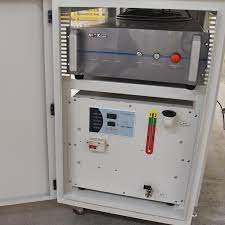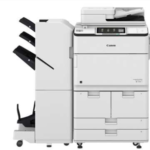As the industrial sector is evolving rapidly, companies can no longer rely on manual labor to meet their production and design needs. Handheld Laser Welding Head is a new technology that combines laser and arc welding. It can be used for a wide range of applications such as cutting, welding, cladding, brazing and shaping.
Also Read: How To Fix [pii_email_db541cc0a6a583d62435] Error Solved
What is a hand held laser welding head and what does it do?
A handheld laser welding head is a type of device that is used to weld two pieces of metal together. It uses a laser to create a heat source that melts the metals, allowing them to fuse together. This process is known as laser welding, and it can be used to weld both ferrous and non-ferrous metals.
There are several benefits to using a handheld laser welding head over other methods of welding. One benefit is that it allows for more precise control over the heat source, which can result in less distortion of the metal. Additionally, laser welding produces a strong weld that is less likely to crack or break than other types of welds.
When choosing a handheld laser welding head, there are several factors to consider. First, you need to determine the power output that you require. Second, you need to decide on the type of lens that you want to use. Third, you need to select a welding tip that is appropriate for the thickness of the metal being welded. Finally, you need to choose a power supply that is compatible with the welding head.
How to buy the perfect hand held laser welding head?
When it comes to choosing the right handheld laser welding head, there are a few things you need to take into account. In this article, we’ll go over some tips to help you choose the perfect one for your needs.
First and foremost, you need to consider what type of welds you’ll be doing most often. If you’re mostly doing spot welds, then you’ll want a laser welding head with a smaller spot size. On the other hand, if you’re going to be doing large area welds, then you’ll need a laser welding head with a larger spot size.
Secondly, you need to think about the power output of the laser welding head. The higher the power output, the faster the welding process will be. However, it’s important to not go too high or else you run the risk of damaging your workpiece.
Finally, you need to take into account the price when choosing a handheld laser welding head. There are many different models on the market, so be sure to compare prices before making your final decision.
Keep these tips in mind and you’ll be sure to find the perfect handheld laser welding head for your needs!
Considerations for buying a hand held laser welding head
When buying a handheld laser welding head, there are a few things to consider. The first is the power of the laser. You’ll want to make sure that the laser is powerful enough to do the job you need it to do. The second is the beam quality. This is important because it will determine how well the laser can penetrate the material you’re trying to weld. The third is the focal length. This will determine how much heat is focused on the area you’re trying to weld. And finally, you’ll want to consider the price.
Types of lasers that are used in Handheld Welding Heads
There are many different types of lasers that can be used in handheld welding heads. The type of laser that is best for your application will depend on a number of factors, including the material you are welding, the thickness of the material, and the desired weld quality.
The most common type of laser used in handheld welding heads is a CO2 laser. CO2 lasers are well suited for welding thin materials such as sheet metal. They can also be used for thicker materials, but the weld quality may not be as good as with other types of lasers.
Another type of laser that is often used in handheld welding heads is a fiber laser. Fiber lasers are more powerful than CO2 lasers and can thus weld thicker materials. They also have a very high beam quality, which results in superior welds.
Finally, diode lasers are also sometimes used in handheld welding heads. Diode lasers are similar to fiber lasers in terms of power and beam quality, but they are typically smaller and lighter weight. This makes them more convenient for use in portable applications.
Conclusion
If you are in the market for a handheld laser welding head, there are several factors you need to consider before making your purchase. In this article, we have outlined some of the most important factors to keep in mind when shopping for a handheld laser welding head. We hope that our tips will help you choose the best possible welding head for your needs.








